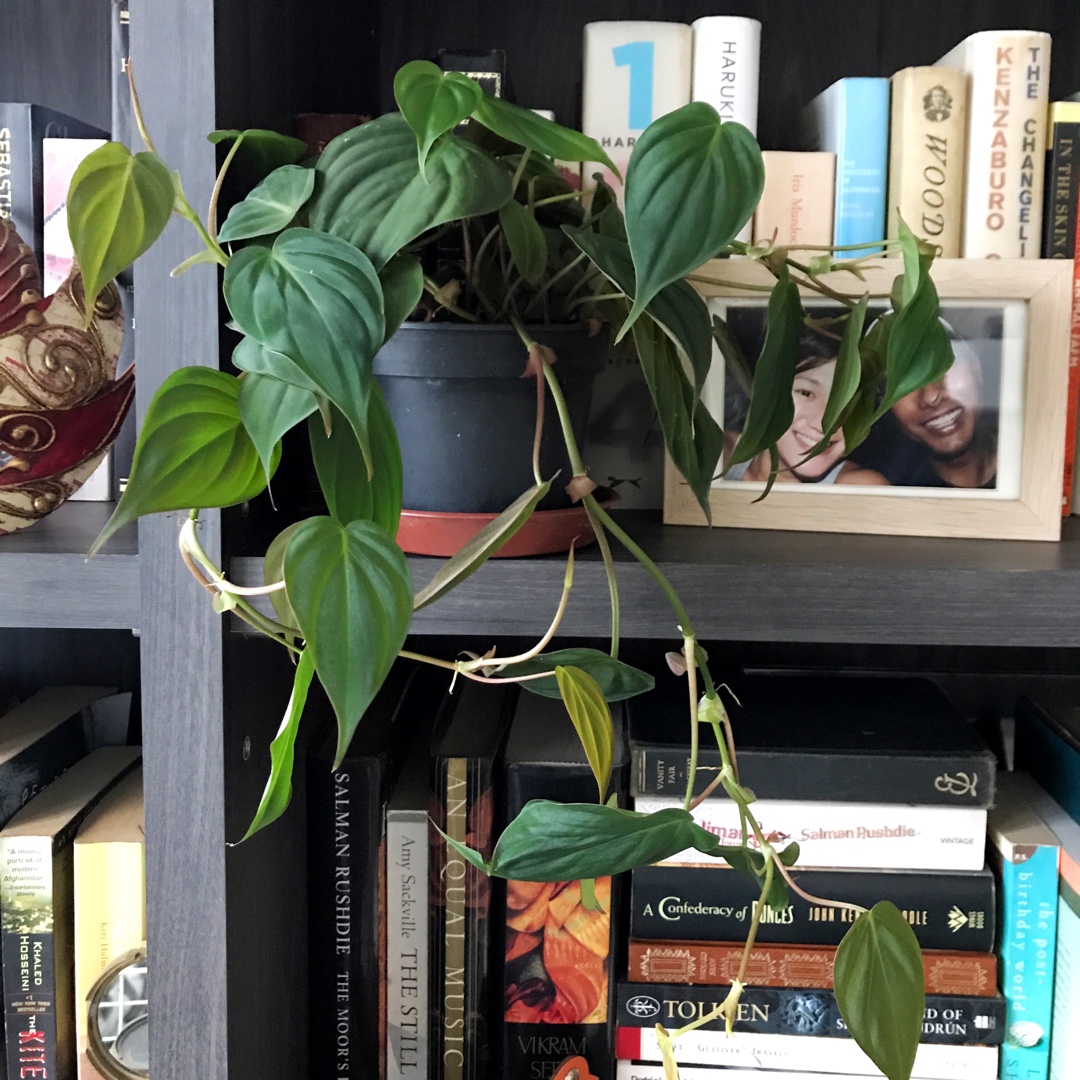
Philodendron micans
Velvet Heart Leaf Philodendron
The perfect philodendron for small spaces, this small plant - widespread in Mexico, the Americans and the Caribbean- has velvety, heart-shaped leaves that never grow beyond 3” in width (nodes are also closely spaced for a compact appearance). Depending on the light, the leaves can take on a deep green to purple and even rust hue, with new leaves edged in pink. Plant this in hanging planter for its elegant vines to trail down. Or provide it with a trellis / burlap wrapped pole to climb. This plant thrives in moist, well draining soil that's rich with organic matter. While it can tolerant lower light conditions than most house plants, it flourishes in bright, indirect light (70 to 85% sunlight). The two popular types of Philodendron are climbers and non-climbing varieties. The climbers, are suited to the average room as long as you provide firm support for the stems. The climbing Philodendrons produce aerial roots from the stems. Most of the non-climbers are capable of growing into immense plants with large, deeply lobed leaves. These are more suited to buildings with large open spaces. Average wamth is required, not less than 55F in winter.
Contributed by @Scratchycat13
-
Partial shade
-
Very little water
-
Not Frost hardy
-
Moist and free draining
Common name
Velvet Heart Leaf Philodendron
Latin name
Philodendron micans
type
Perennial
family
Araceae
ph
5.0 - 7.0 Acid - Neutral
Plant & bloom calendar
-
Best time to plant
full grown dimensions
 0.50 M
3.00 M
0.50 M
3.00 M
Philodendron micans
The perfect philodendron for small spaces, this small plant - widespread in Mexico, the Americans and the Caribbean- has velvety, heart-shaped leaves that never grow beyond 3” in width (nodes are also closely spaced for a compact appearance). Depending on the light, the leaves can take on a deep green to purple and even rust hue, with new leaves edged in pink. Plant this in hanging planter for its elegant vines to trail down. Or provide it with a trellis / burlap wrapped pole to climb. This plant thrives in moist, well draining soil that's rich with organic matter. While it can tolerant lower light conditions than most house plants, it flourishes in bright, indirect light (70 to 85% sunlight). The two popular types of Philodendron are climbers and non-climbing varieties. The climbers, are suited to the average room as long as you provide firm support for the stems. The climbing Philodendrons produce aerial roots from the stems. Most of the non-climbers are capable of growing into immense plants with large, deeply lobed leaves. These are more suited to buildings with large open spaces. Average wamth is required, not less than 55F in winter.
Planting
From Early Spring TO Early Spring
Plant in a location with bright, indirect sunlight. Position near to a window where direct sunlight cannot touch the foliage. If the plant gets too much light, the leaves will begin to turn yellow. If the stems are long and leggy without plenty of leaves, the plant is most likely to be receiving insufficient light.
Propagation
From Early Summer TO Late Summer
Cuttings require warm conditions. In summer, take stem cuttings or air layer the climbing varieties. With non-climbing varieties, shoots taken from the base of the stem can be used as cuttings.



























